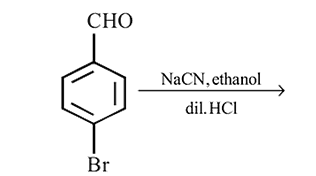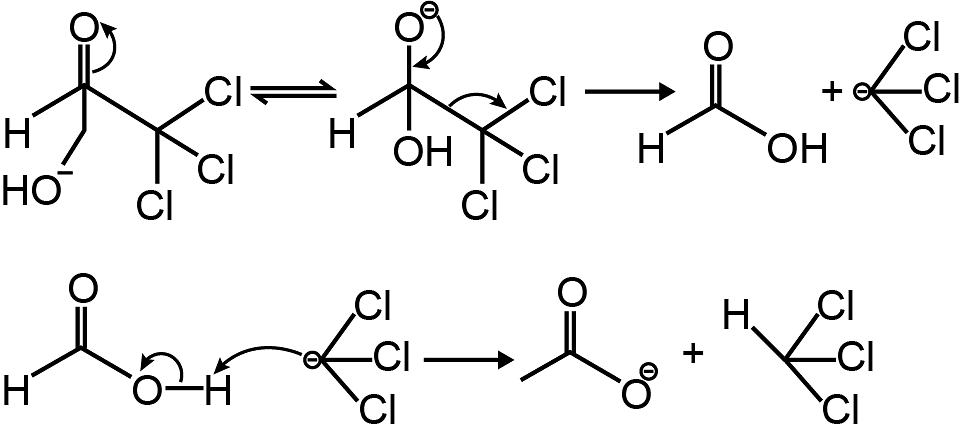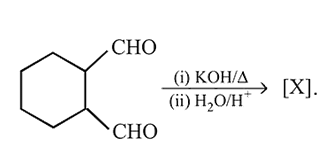JEE Exam > JEE Tests > Chemistry for JEE Main & Advanced > Test: Chemical reactions for aldehydes and ketones - JEE MCQ
Test: Chemical reactions for aldehydes and ketones - JEE MCQ
Test Description
20 Questions MCQ Test Chemistry for JEE Main & Advanced - Test: Chemical reactions for aldehydes and ketones
Test: Chemical reactions for aldehydes and ketones for JEE 2024 is part of Chemistry for JEE Main & Advanced preparation. The Test: Chemical reactions for aldehydes and ketones questions and answers have been
prepared according to the JEE exam syllabus.The Test: Chemical reactions for aldehydes and ketones MCQs are made for JEE 2024 Exam. Find important
definitions, questions, notes, meanings, examples, exercises, MCQs and online tests for Test: Chemical reactions for aldehydes and ketones below.
Solutions of Test: Chemical reactions for aldehydes and ketones questions in English are available as part of our Chemistry for JEE Main & Advanced for JEE & Test: Chemical reactions for aldehydes and ketones solutions in
Hindi for Chemistry for JEE Main & Advanced course. Download more important topics, notes, lectures and mock
test series for JEE Exam by signing up for free. Attempt Test: Chemical reactions for aldehydes and ketones | 20 questions in 20 minutes | Mock test for JEE preparation | Free important questions MCQ to study Chemistry for JEE Main & Advanced for JEE Exam | Download free PDF with solutions
Detailed Solution for Test: Chemical reactions for aldehydes and ketones - Question 1
Detailed Solution for Test: Chemical reactions for aldehydes and ketones - Question 2
| 1 Crore+ students have signed up on EduRev. Have you? Download the App |
Test: Chemical reactions for aldehydes and ketones - Question 3
What is the product of the following reaction?

Detailed Solution for Test: Chemical reactions for aldehydes and ketones - Question 3
Test: Chemical reactions for aldehydes and ketones - Question 4

Product (B) in this reaction is:
Detailed Solution for Test: Chemical reactions for aldehydes and ketones - Question 4
Test: Chemical reactions for aldehydes and ketones - Question 5
Which one of the following is not formed by aldol condensation of a mixture of ethanal and propanal?
Detailed Solution for Test: Chemical reactions for aldehydes and ketones - Question 5
Test: Chemical reactions for aldehydes and ketones - Question 6
The number of aldehydes that undergo cannizaro reaction from the following are Phenyl ethanal, Methanal, 2 Methoxy propanal, Trichoro ethanal
Detailed Solution for Test: Chemical reactions for aldehydes and ketones - Question 6
Detailed Solution for Test: Chemical reactions for aldehydes and ketones - Question 7
Test: Chemical reactions for aldehydes and ketones - Question 8

Identify appropriate reagents for the above reaction:
Detailed Solution for Test: Chemical reactions for aldehydes and ketones - Question 8
Test: Chemical reactions for aldehydes and ketones - Question 9
The starting compounds needed to make the following compound?


Detailed Solution for Test: Chemical reactions for aldehydes and ketones - Question 9
Detailed Solution for Test: Chemical reactions for aldehydes and ketones - Question 10
Test: Chemical reactions for aldehydes and ketones - Question 11
The reagents employed to carry the following transformation

Detailed Solution for Test: Chemical reactions for aldehydes and ketones - Question 11
Test: Chemical reactions for aldehydes and ketones - Question 12
What is the product of the following reaction?


Detailed Solution for Test: Chemical reactions for aldehydes and ketones - Question 12
Test: Chemical reactions for aldehydes and ketones - Question 13
What is the product of the following reaction?


Detailed Solution for Test: Chemical reactions for aldehydes and ketones - Question 13
Test: Chemical reactions for aldehydes and ketones - Question 14
In the following reaction, the product  is
is 
 is
is 
Detailed Solution for Test: Chemical reactions for aldehydes and ketones - Question 14
Test: Chemical reactions for aldehydes and ketones - Question 15
3-hydroxybutanal is formed when reacts with in dilute solution. What are and ?
Detailed Solution for Test: Chemical reactions for aldehydes and ketones - Question 15
Test: Chemical reactions for aldehydes and ketones - Question 16
Amongst the following compounds, the one that will not respond to Cannizzaro reaction upon treatment with alkali is
Detailed Solution for Test: Chemical reactions for aldehydes and ketones - Question 16
Detailed Solution for Test: Chemical reactions for aldehydes and ketones - Question 17
Test: Chemical reactions for aldehydes and ketones - Question 18
What is the product of the following reaction.


Detailed Solution for Test: Chemical reactions for aldehydes and ketones - Question 18
Test: Chemical reactions for aldehydes and ketones - Question 19
The most reactive compound towards formation of cyanohydrin on treatment with KCN followed by acidification is
Detailed Solution for Test: Chemical reactions for aldehydes and ketones - Question 19
Test: Chemical reactions for aldehydes and ketones - Question 20
What is D in the following sequence of reactions?


Detailed Solution for Test: Chemical reactions for aldehydes and ketones - Question 20
|
352 videos|596 docs|309 tests
|
Information about Test: Chemical reactions for aldehydes and ketones Page
In this test you can find the Exam questions for Test: Chemical reactions for aldehydes and ketones solved & explained in the simplest way possible.
Besides giving Questions and answers for Test: Chemical reactions for aldehydes and ketones, EduRev gives you an ample number of Online tests for practice
|
352 videos|596 docs|309 tests
|
Download as PDF






 , Structure of
, Structure of  is:
is:


 -hydrogens undergo cannizzaro reaction.
-hydrogens undergo cannizzaro reaction.






 ion and the reaction is
ion and the reaction is

 atom, undergo Cannizzaro reaction if treated with concentrated alkali (NaOH), i.e., one mole of the aldehyde is reduced to alcohol and other mole is oxidised to salt of acid. Thus, the given aldehyde (glyoxal) undergoes intramolecular Cannizzaro reaction, ie. its half part is oxidised and half is reduced.
atom, undergo Cannizzaro reaction if treated with concentrated alkali (NaOH), i.e., one mole of the aldehyde is reduced to alcohol and other mole is oxidised to salt of acid. Thus, the given aldehyde (glyoxal) undergoes intramolecular Cannizzaro reaction, ie. its half part is oxidised and half is reduced.
 -H-atoms undergoes aldol condensation in the presence of dil.
-H-atoms undergoes aldol condensation in the presence of dil.  and yield
and yield  -hydroxy aldehydes.
-hydroxy aldehydes.
 -hydrogen atom. Among the given compound
-hydrogen atom. Among the given compound  and HCHO respond
and HCHO respond do not due to the following reason.
do not due to the following reason.
 carbonium is resonance stabilised therefore it is better leaving group than OH. These initial products exchange a proton to give ion of carboxylic acid and trichloromethane (
carbonium is resonance stabilised therefore it is better leaving group than OH. These initial products exchange a proton to give ion of carboxylic acid and trichloromethane ( ).
).
 ?
?
 group is electron withdrawing which enchances the addition of
group is electron withdrawing which enchances the addition of  ion (a nucleophili additon reaction).
ion (a nucleophili additon reaction).















